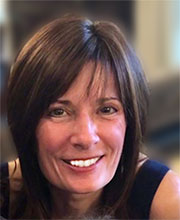 When 50 percent of marriages end in divorce, 75 percent of divorcees remarry, 65 percent of their marriages include children from another marriage and 60 percent of those marriages end in divorce, can there be anything traditional left about the “traditional family”?
When 50 percent of marriages end in divorce, 75 percent of divorcees remarry, 65 percent of their marriages include children from another marriage and 60 percent of those marriages end in divorce, can there be anything traditional left about the “traditional family”?
As my husband and I were introduced to exes, stepparents and stepsiblings at a party, we found ourselves trying to put the puzzle together…and pieces of it were ours.
We’re creating new traditions. We have more working moms and fewer children, but baby sisters and big brothers no longer have to be birthed or adopted. They can be married into.
Some studies show that children from divorced families have more social and emotional problems than those from intact families. But surely children from divorced families who become part of healthy families can have fewer social and emotional problems than children who remain in unhealthy intact families?
We’d do better to make loving — rather than staying together or divorcing — the tradition. And if we make loving the tradition before getting married (the first time), we’re bound to have fewer divorces and stronger families.
We must start where we are, though. For some of us, it is too late to marry for love the first time. For some of us, it is even too late to teach our children to marry for love the first time. But it’s not too late for any of us to teach our children to love now, right where they are.
That might mean teaching your child to love a stepparent, stepbrothers and -sisters, and your ex — maybe even their own ex! And remember, the best way to teach is by example.
Too often, we send mixed messages. We’ve learned that it’s unhealthy for children to hear their divorced parents argue or demean each other; children shouldn’t have to choose one parent over the other. And we’ve learned it’s unhealthy for children to hear us badmouth their stepparents.
We need to take that a step further and talk about what is healthy for children, though. It’s healthy for children to see us love them, and all the other members of their families, unconditionally!
A lot to ask? Maybe. Too much to ask? No. Just because you can’t partner with your ex doesn’t mean you can’t love them. But how do you show love for his new spouse? The same way you show love for anybody else.
Get to know the person — spend time building trust and listening.
Accept the person — show respect for what’s good in him or her.
Demonstrate caring for the person — contribute something to his or her well-being.
Even at a glance, we see how useful (as well as challenging) it is to teach children to love, and how irresponsible it is to teach them to do otherwise.
Imagine what a difference it could make in your child’s relationship with her stepfather if you showed her how to love him. First, you give her permission to love him without betraying you. Then you demonstrate what it looks like to love him — to love anybody, including herself.
When we teach children to love some people and not others, we teach them to love conditionally. In other words, we don’t really teach them to love at all.
When we teach children to love everybody, we help them to extend their family to include everybody…and I think that’s about as healthy as we can hope for. It’s not really a new tradition, though. The documentary “The Real Eve,” which explores our shared genetic heritage, argues the latest DNA reconstructions link every living person on the earth.
And, of course, neither is love a new tradition. It is the tradition. May it always transcend what would otherwise divide us.
 Jan's program for the quest of a lifetime.
Jan's program for the quest of a lifetime. Are you ready to live your destiny?
Are you ready to live your destiny?